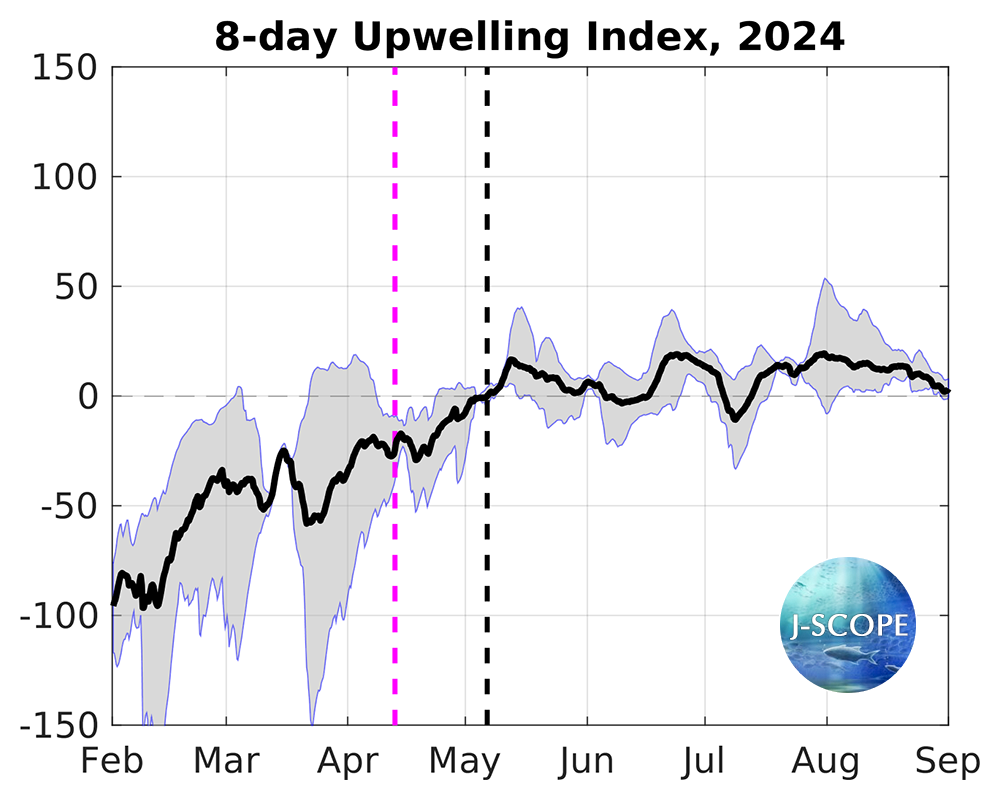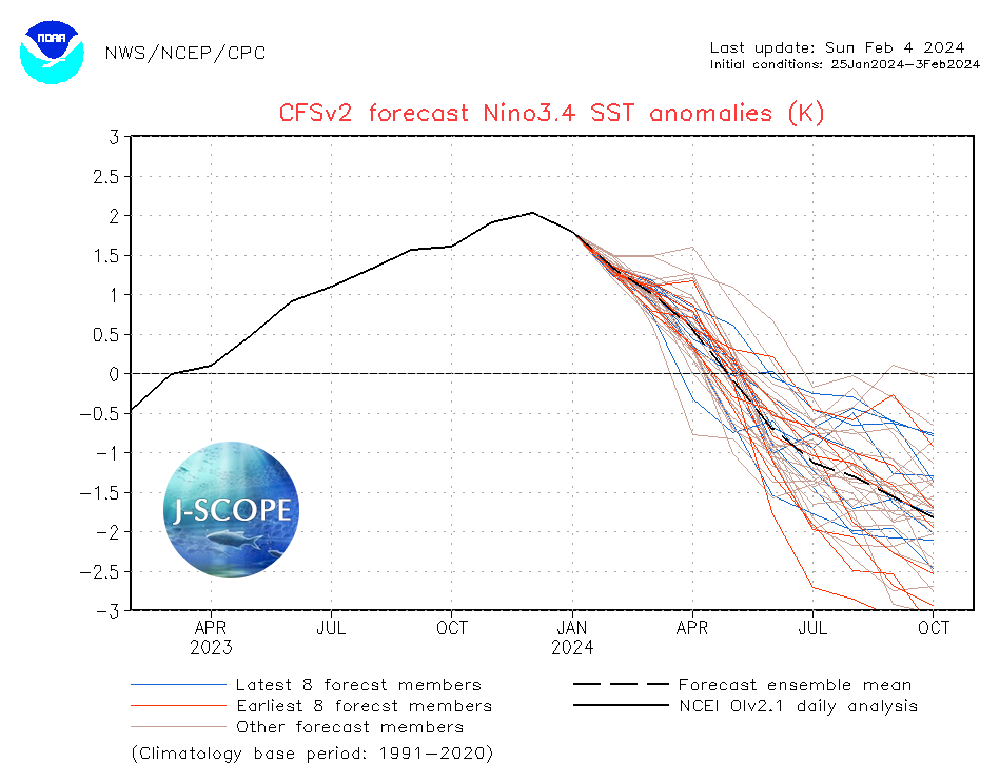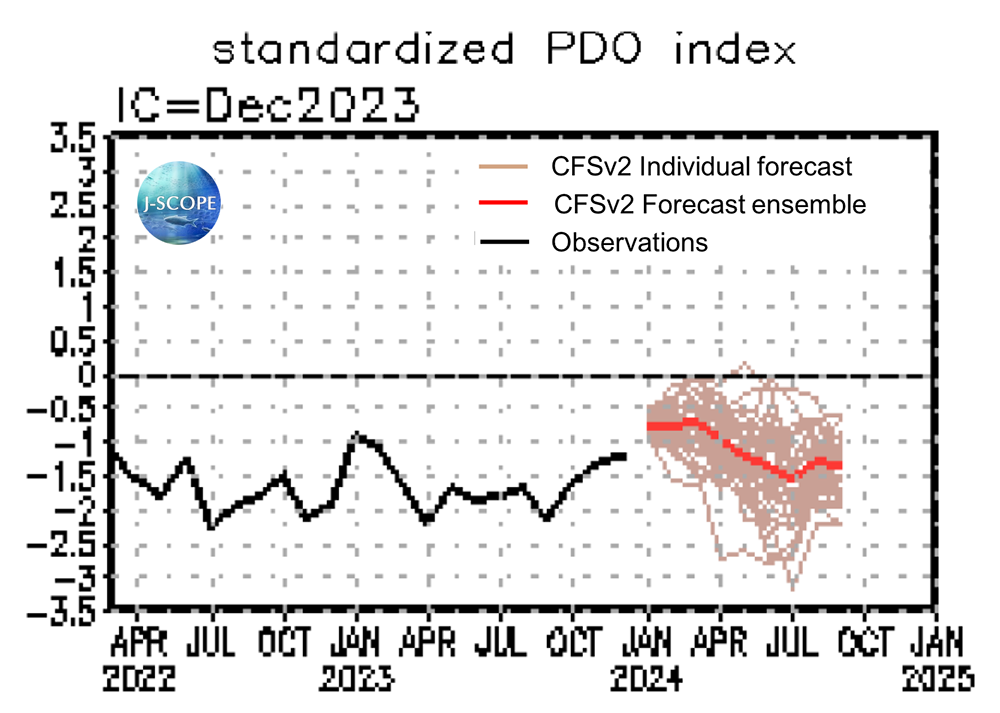Forecast Origin Dates
The Fishery Management Council manages fisheries off the coast of California, Oregon, and Washington, for about 119 species of ground fish, salmon, coastal pelagic species, and highly migratory species. The Fishery Management Council has requested that its Ecosystem Plan Development Team provide annual State of the California Current Ecosystem Reports. The reports include observed indicators of environmental conditions in the California Current that affect the productivity and distribution of harvested fish populations.
Using our J-SCOPE ocean condition predictions, we can forecast many of these California Current environmental conditions and indicators, including:
- Regional Upwelling Indices which drive local primary production: The wind product reported here is the 8-day Upwelling Index. The average of all three model runs making up the ensemble is plotted as a solid line with the range of ensemble runs shown as a gray cloud around the line. The upwelling season is forecasted to begin on the May 6th (black line), which is later than the climatological average of April 13th (pink line).

- The second is the Cumulative Upwelling Index, CUI. The ensemble mean is plotted in the solid line and range of the ensemble runs plotted as thin blue lines around that line. The spring transition or day when upwelling begins predicted by the CUI is late March, with a lot of uncertainty around that date. The transition is predicted to occur earlier than the climatological average of April 13th. We know from prior forecast years that the CFS model is biased toward longer upwelling seasons, due to late onset of the fall transition.

- Dissolved oxygen levels and hypoxic events
- Ocean conditions relevant to coastal pelagic species and salmon distribution or abundance
Complementary forecasting tools provide forecasts of basin-scale climate indicators:
- Multivariate ENSO Index: The January 2024 CFS forecasts a transition from El Niño to ENSO-neutral conditions is likely by April - June and then increasing odds of La Niña developing in June - August 2024.

- Pacific Decadal Oscillation: The January 2024 CFS forecast predicts persistent negative PDO phase through the autumn of 2024.









